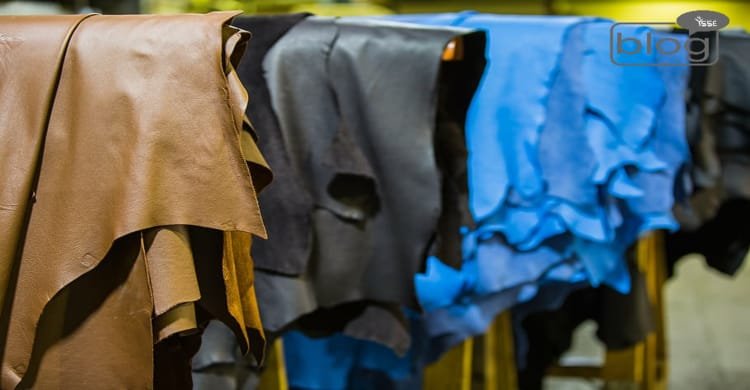Leather is a material made from the skin of animals, through a process of tanning. Leather is used to make a variety of items including clothing, footwear, hand bags , furniture and so on. There are many kinds of tanning processes. For example: chrome tanning, vegetable tanning, aldehyde tanning, battling, etc. Though it has many processes to produce, 80-90% of the world’s leather is produced through chrome tanning. Many of us know that the effect of chrome tanning is pernicious in the environment. To reduce the bad effects of chrome tanning from the environment, we can use vegetable tanning as an alternative way of the chrome tanning process.
What is vegetable tanning? :
In the age of sustainable choices vegetable tanning emerges as a testament to the harmony between tradition & environmental consciousness. It is a natural process that respects the animal and the environment.
History of vegetable tanning:
Vegetable tanning is one of the oldest methods of leather tanning and consists in transforming a raw animal skin into a material that respects its original characteristics or much as possible. It is believed that leather has been produced through vegetable tanning since 2000 years ago. Even if the greatest development took place during the middle ages and until the end of the nineteenth century almost all leathers were vegetable tanned. Recently, the more modern and industrialised tanning methods have become common and it can be assumed that nowadays 10-12% of all leather is vegetable tanned.
Process of vegetable tanning:
Ingredients: Raw materials used for vegetable tanning are natural tannins, available in liquid or powder form, obtained from a different part of plants including woods, barks, fruits, fruit pods, and leaves. The most common tannins are obtained from: Chestnut wood, Quebracho wood, Tara pods , Oak wood etc.
Process: The process of vegetable tanning is curing, liming, de-liming, tanning, drying, and treatment respectively.
Advantages of vegetable tanning:
1. Eco Friendly process, 2. Recycling of tree bark, 3, it can help one country to reach SDG goals, 4. Vegetable tanned leather can be easily dyed and tooled. 5. Vegetable tanned leather is so soft, comfortable and flexible.
Disadvantages of vegetable tanning:
1. Needs too much water supply for this process but if waterless-aluminium-vegetable tanning is used instead, water wastage can be reduced. 2. Time consuming process, 3. Limited colour range.
Environmental impact of vegetable tanning: The vegetable tanning process involves using tannins from plant sources, such as tree barks (oak, hemlock, chestnut) or other plant parts. These tannins bind to collagen fibres in animal hides, transforming them into leather. Due to using environmentally friendly material in this process, it doesn’t create any pollution. Moreover waterless-aluminium-vegetable tanning process reduces water wastage and aluminium salts are not harmful to the environment.
Comparison with other tanning methods: The widely used method in the leather industry is chrome tanning. It is a process that involves the use of chromium salts, typically chromium sulphate. Chrome tanning is known for its rapid processing time compared to other tanning methods. But it poses health hazards and environmental pollution. Moreover it releases toxic liquid waste. That can cause oil depletion, health issues like chronic fatigue, dermatitis, lung cancer and more. On the other hand vegetable tanning manufactures sustainable leather. Absent The Use of chemicals ,this process also enjoys environmental benefits as it shows dilapidation in BOD,COD, and TDS by 88,89,97% respectively.
From the above discussion, it shows a crystal clear impression about the environmental impact of vegetable tanning. So, considering all advantages and disadvantages, let’s uncover the delicate foot print it traces on our environment, inviting us to tread lightly on the path of leather.
For more blogs like this click here
Writer :
Umme Habiba Chowdhury
Intern, Content Writing Department
YSSE

